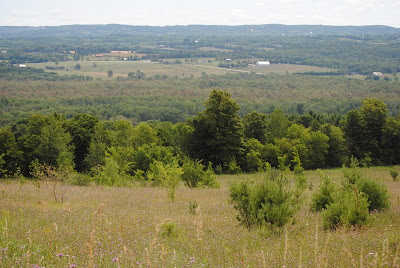
We started at Walkerton and canoed downstream to the first bridge, about a 3 hour paddle. I'm told this section is one of the best on the river, because of the number of whitewater stretches - gentle whitewater admittedly, but fun. And it's true; much of the trip we felt we were just steering more than having to paddle - my kind of canoeing! I've done whitewater trips in northern Ontario, which can be much more challenging, but this was certainly exciting enough to be really enjoyable.

In the middle of this stretch is a bend of huge sand deposits, leftover from the glaciers I presume, perhaps associated with some ancient shoreline. The river hurries around in a huge bend at the base of the cliff, providing a surprising bit of spectacular scenery in rural Ontario, never seen unless you're in a canoe. And it's also remarkably wild. I think we only saw one shack on the shoreline, and the edge of one cornfield, but we saw at least a dozen kingfishers.

I was paddling my new single 'pack' canoe, the one with a kayak seat and paddle, and it worked really well in the whitewater stretches for the first time. I also learned why they call it a 'pack' canoe - it's not because you can carry packs in it; it's because the original model, built for Teddy Roosevelt who was an avid fly fisherman, was small enough to be packed into the wilderness on the back of a mule!



















